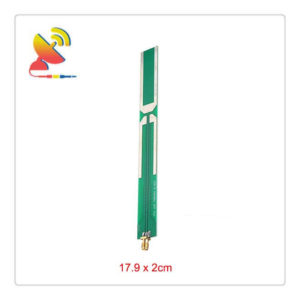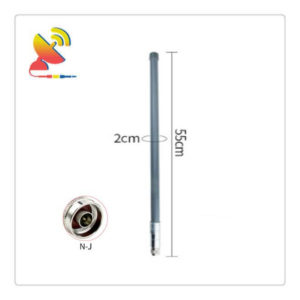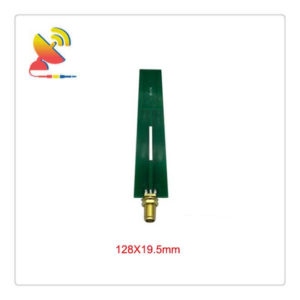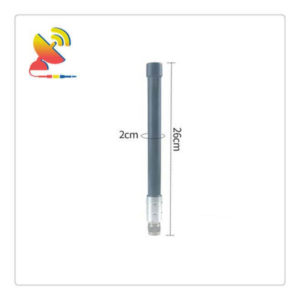ADSB Antennas
ADSB Antenna Manufacturer
ADS-B Antenna Supplier
C&T RF Antennas Inc is the internal ADS-B antenna and external ADSB antenna manufacturer and ADS-B antenna supplier in China.
C&T RF Antennas Inc provides indoor-outdoor antennas and RF amplifiers LNA amplifiers for ADS-B system.
What is an ADS-B system?
ADS-B system is the abbreviation of the broadcast-type automatic correlation surveillance system, which consists of multiple ground stations and airborne stations to complete two-way communication of data in a mesh, multipoint-to-multipoint manner.
ADS-B system is an information system that integrates communication and surveillance and consists of three parts: information source, information transmission channel, and information processing and display.
It organically combines conflict detection, conflict avoidance, conflict resolution, ATC monitoring, and ATC consistency monitoring, as well as a cabin, integrated information display, which enhances and extends very rich functions for the new navigation system and also brings potential economic and social benefits.
In general, only onboard electronic equipment (GPS receiver, data link transceiver and its antenna, and cockpit conflict information display CDTI) is required to complete the relevant functions without any ground auxiliary equipment, and an aircraft equipped with ADS-B can broadcast its own precise position and other data (such as speed, altitude and whether the aircraft is turning, climbing or descending, etc.) via data link.
ADS-B receivers, in combination with ATC systems and other aircraft onboard ADS-B, provide accurate, real-time conflict information in both air and land.
ADS-B is a new technology that redefines the three elements of today’s air traffic control (communication, navigation, and surveillance).
What does ADS-B refer to?
ADS-B is an acronym for Automatic Dependent Surveillance for Broadcast.
Automatic – Automatic, which operates 24/7 and is not guarded.
Dependent – Correlated, it only needs to rely on accurate global satellite positioning data.
Surveillance – Monitoring (obtaining) aircraft position, altitude, speed, heading, identification number, and other information.
Broadcast – Broadcast, no answer, aircraft broadcast their data information to each other or to each other and to ground stations.
How is the ADS-B system composed?
ADS-B system is an information system integrating communication and surveillance, consisting of three parts: information source, information transmission channel, information processing, and display.
Information Source
The main information of ADS-B is the 4-dimensional position information of the aircraft (longitude, latitude, altitude, and time) and other possible additional information (conflict warning information, pilot input information, track angle, course inflection point, etc.) as well as the aircraft identification information and category information.
In addition, additional information such as heading, airspeed, wind speed, wind direction, and aircraft outside temperature may also be included.
This information can be obtained from the following avionics:
(1) Global Navigation Satellite System (GNSS)
(2) Inertial Navigation System (INS)
(3) Inertial Reference System (IRS)
(4) Flight Manager
(5) Other onboard sensors.
Information Transmission Channels
The information transmission channel of ADS-B is in the form of ADS-B messages, which are broadcasted through air-air and air-ground data chains.
Information processing and display
The information processing and display of ADS-B mainly include the extraction, processing, and effective algorithm of position information and other additional information, and forms clear and intuitive background maps and traces, traffic distribution, parameter windows, message windows, etc., and finally provides the user with a pseudo-radar screen in real-time.
What are the ADS-B system functional modules?
The ADS-B system functional module consists of three main components, including airborne equipment, ground-based transceiver, processing application equipment, and communication links and transmission networks.
Airborne Equipment
The airborne equipment associated with the ADS-B function mainly includes the airborne Global Navigation Satellite System (GNSS) receiver/multi-mode receiver (MMR), the data link system, and the cockpit display of traffic information (CDTI) required for the IN function.
Ground-based transceiver and processing application equipment
ADS-B (1090ES) ground equipment, mainly including 1090ES mode, UAT mode ground stations, and related information processing and application equipment.
The ADS-B ground station will process the received air broadcast information and display the processing results on the controller’s monitoring terminal to provide a reference for surveillance and control, or it can be connected to the automated air traffic management system for reference use by relevant departments and personnel, or the collected wide-area surveillance information can be verified for surveillance integrity and consistency.
The ADS-B ground station can also send information to aircraft, i.e. Air Traffic Information Service Broadcast (TIS-B) and Flight Information Service Broadcast (FIS-B).
The ADS-B ground station sends the received aircraft position information to the Surveillance Data Processing System (SDPS), which also receives data from radar and other surveillance equipment. SDPS fuses all surveillance data into a unified target position and sends it to the TIS-B server.
The TIS-B server integrates and filters the information to generate a panoramic air traffic surveillance message, which is then sent to the aircraft via the ADS-B ground station so that the crew can obtain information about the surrounding traffic.
FIS-B mainly sends information such as meteorological and navigational intelligence to aircraft in order to keep crews informed of route meteorological and airspace restriction information for flight safety.
Communication Link and Transmission Network
ADS-B information transmission relies on wireless and wired communication methods, and both OUT and IN functions are based on data chain communication technology.
There are three types of air-ground and air-air data chains: 1090ES data chain based on heterodyne transceiver S mode SSR transceiver, UAT mode data chain (e.g. 978 MHz), and mode 4 VHF data chain (VDL-4).
For ADS-B wide-area surveillance, TIS-B information and FIS-B information access, automated air traffic management system information integration, etc., terrestrial wired or other wireless communication methods and networks are also required.
What are the main advantages of ADS-B?
ADS-B technology enables true flight information sharing. The trajectory information intercepted in air traffic management activities is not only necessary for the implementation of air traffic control in the region, but also for the implementation of seamless control of flights across the border of flight information zones (especially the information zones of different air traffic control systems), which is a very valuable resource for improving the efficiency of airline operations management.
However, the traditional radar surveillance technology has poor remote interception capability, complicated raw information format, and high information processing cost, and it is not easy to realize the screening of designated trajectory and difficult to realize information sharing.
The ADS-B technology, developed following the guiding principles of air-ground integration and global interoperability, provides realistic feasibility for the sharing of track information.
What are the ADS-B technology applications?
Air Traffic Control
(a) ADS-B technology for air traffic control can provide virtual radar control services for aircraft in continental areas where ATC radar cannot be deployed with better than radar spacing standards.
In radar-covered areas, the surveillance capability of radar systems can be enhanced at a lower cost, even without additional radar equipment, to increase flight capacity on airways and even in terminal areas.
The networking of multiple points of ADS-B ground equipment can serve as a bypass system for the radar surveillance network and can provide ATC services at no less than radar spacing standards.
The use of ADS-B technology also enables flight dynamic surveillance over a larger area for improved flight traffic management.
Uplink data broadcasting using ADS-B also provides various intelligence services for operating aircraft.
The application of ADS-B technology in ATC heralds a major change in the traditional air traffic surveillance technology that is about to take place.
Enhancing air-air coordination
ADS-B technology is used to enhance air-air cooperation, which can improve the mutual surveillance capability between aircraft in flight.
This capability of the ADS-B system shifts the responsibility of maintaining safe flight separation more to the air, which is an indispensable technical basis for achieving free flight.
Airfield activity surveillance
ADS-B technology is used in airport ground activity areas to enable field activity surveillance of aircraft at a lower cost.
By using ADS-B technology to receive and process ADS-B broadcast information, it is possible to manage moving targets on the ground at airports without even relying on field surveillance radar.
C&T RF Antennas Inc manufactures the 5G NR antennas, 4G LTE antennas, 3G UMTS GSM antennas, 2G GPRS NB-IoT antennas, LoRa/LoRaWan antennas (including 169MHz antennas, 230MHz antennas, 315MHz antennas, 433MHz antennas, 868MHz antennas, 915MHz antennas), 2.4GHz 5GHz Wi-Fi antennas, GNSS antennas, GPS antennas, Cellular antennas, UHF VHF antennas, UWB antennas, etc.
To help you select the best antenna for your application, please contact us for more details such as the ADS-B antenna datasheet, ADS-B antenna pricing, ADS-B antenna inventory, and the ADS-B antenna types.
Showing all 4 results




